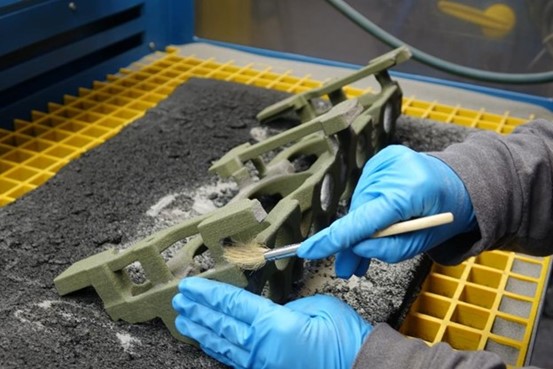The landscape of additive 3D manufacturing continues to evolve, showcasing innovative technologies and applications that are reshaping various industries. At the forefront of this transformation is the Additive Manufacturing Users Group (AMUG), which recently announced its board members for the upcoming term during its 2024 conference. This event not only highlighted the leadership within AMUG but also featured key presentations from industry leaders, including Greg Morris and Olaf Diegel, who shared their insights on the latest advancements in additive manufacturing.

The Significance of Additive Manufacturing
Additive manufacturing refers to the process of creating three-dimensional objects by layering materials, typically using 3D printers. This technology has gained prominence due to its ability to produce complex geometries that traditional manufacturing methods cannot achieve. The versatility of additive manufacturing makes it applicable across various sectors, including aerospace, healthcare, and automotive.
Focus on Metal 3D Printing
One of the significant trends within the additive manufacturing space is the rise of 3D printing for metal casting. This method allows manufacturers to create intricate metal parts with high precision and strength. At TCT ASIA, discussions surrounding the advancements in metal 3D printing highlight how this technology is streamlining production processes and reducing material waste.
Greg Morris’s presentation on the GE LEAP fuel nozzle is a prime example of how metal 3D printing enhances performance in aerospace applications. The LEAP nozzle, produced using additive methods, showcases the potential for weight reduction and increased efficiency—crucial factors in the highly competitive aerospace industry. The ability to create such complex parts without the need for traditional tooling demonstrates the transformative power of additive methods.
Creative Approaches to Additive Manufacturing
Olaf Diegel’s talk at the conference emphasized the importance of thinking creatively about additive manufacturing. He explored how combining different materials and technologies can lead to groundbreaking applications and designs. His insights encourage engineers and designers to push the boundaries of what is possible with additive 3D techniques, fostering innovation and collaboration across industries.
The Role of TCT ASIA in Advancing Additive Technologies
TCT ASIA serves as a pivotal platform for showcasing the latest developments in additive manufacturing, drawing together leaders and innovators from around the globe. The event highlights cutting-edge technologies, including the latest 3D printers for metal casting, which are crucial for industries aiming to optimize their manufacturing processes.
With automotive giants like BMW and Audi actively embracing 3D printing to produce complex automotive parts, the implications for mass production are profound. By leveraging 3D printing for mass production, these companies can significantly reduce lead times and costs while enhancing the design possibilities for their products. This shift not only streamlines the manufacturing process but also positions companies to respond more rapidly to market demands.
Conclusion
As additive manufacturing continues to gain traction, events like TCT ASIA and the insights from AMUG members play a crucial role in shaping the future of this technology. With the ongoing advancements in 3D printing for metal casting and the creative approaches championed by industry leaders, the potential for additive 3D manufacturing is vast. Companies that embrace these innovations will likely lead the way in their respective fields, driving efficiency and unlocking new possibilities in production.